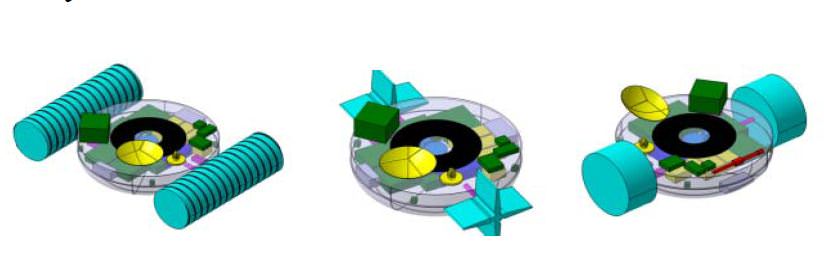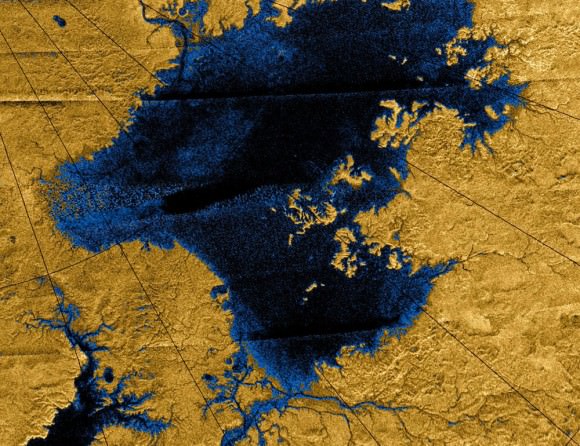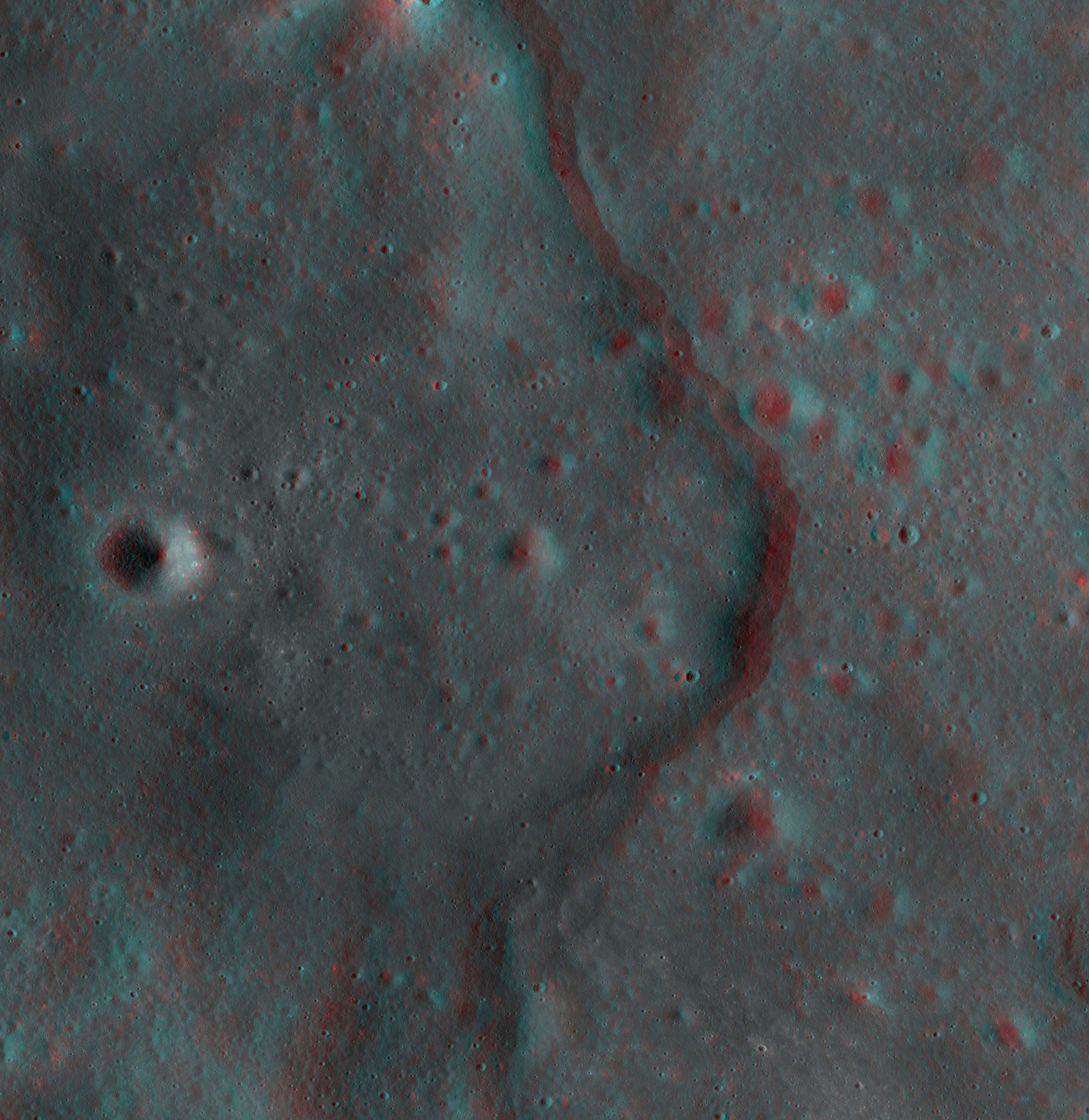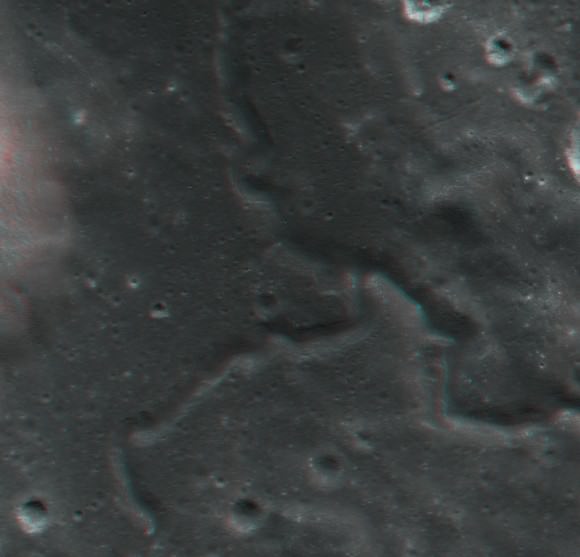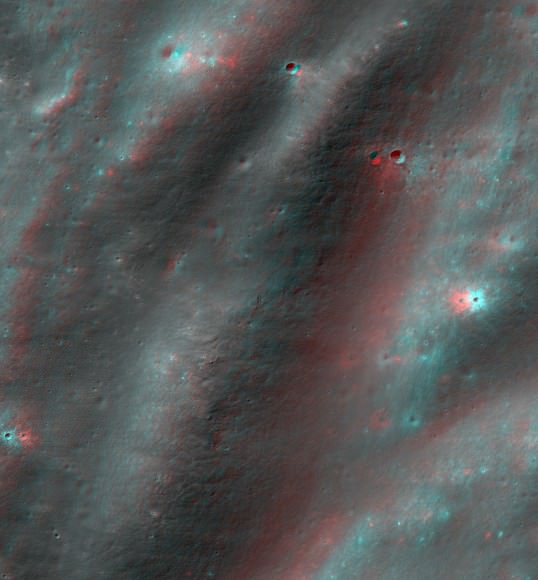Ever since its existence was first proposed, the evidence for Planet 9 continues to mount. But of course, said evidence has been entirely indirect, consisting mostly of studies that show how the orbits of Trans-Neptunian Objects (TNOs) are consistent with a large object crossing their path. However, evidence is also emerging that comes from the center of the Solar System itself.
This latest line of evidence comes from Caltech, where researchers Elizabeth Bailey, Konstantin Batygin, and Michael E. Brown (the latter of whom were the ones who first proposed Planet 9’s existence) have published a new study linking solar obliquity to the existence of Planet 9. Essentially, they claim that the axial tilt of the Sun (6°) could be due to the gravitational influence a large planet with an extreme orbit.
To recap, the issue of Planet was first raised in 2014 by astronomers Scott Sheppard and Chadwick Trujillo. Noting the similarities in the orbits of distant Trans-Neptunian Objects (TNOs), they postulated that a massive object was likely influencing them. This was followed in 2016 by Konstantin Batygin and Michael E. Brown of Caltech suggesting that an undiscovered planet was the culprit.
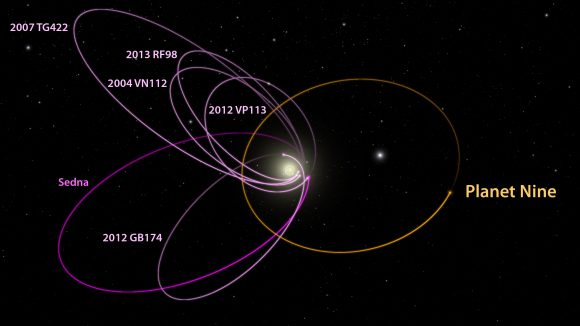
Calling this body Planet 9, they speculated that it had a mass 10 times greater than that of Earth, and took 20,000 years to complete a single orbit of our Sun. They also speculated that its orbit was tilted relative to the other planets of our Solar System, and extremely eccentric. And little by little, examinations of other Solar bodies have shown that Planet 9 is likely out there.
For the sake of their study – “Solar Obliquity Induced by Planet Nine“, which was recently published in the Astrophysical Journal – the research team (led by Bailey) looked to the obliquity of the Sun. As they state in their paper, the six-degree axial tilt of the Sun can only be explained in one of two ways – either as a result of an asymmetry that was present during the formation of Solar System, or because of an external source of gravity.
To test this hypothesis, Bailey, Batygin and Brown used an analytic model to test how interactions between Planet 9 and the rest of the Solar System would effect their orbits over the course of the last 4.5 billion years. As Elizabeth Bailey, a graduate student at Caltech’s Division of Geological and Planetary Sciences and the lead author on the paper, told Universe Today via email:
“We simulated the solar system’s motion. Planet 9 forces the solar system to slowly wobble. If Planet 9 is out there, we are in the process of wobbling right now, as we speak! But it happens very slowly, a few degrees tilt per billion years. Meanwhile the sun is not wobbling much, so it looks like the sun is tilted. A range of Planet 9 parameters cause exactly the configuration of the sun that we see today.

In the end, they concluded that the Sun’s obliquity could only be explained by the influence of giant planet with an extreme orbit, one that is consistent with the characteristics attributed to Planet 9. In other words, the existence of Planet 9 offers an explanation for the Sun’s peculiar behavior, something which has remained a mystery until now.
“Planet Nine was first hypothesized because the orbits of objects in the outer reaches of the solar system are confined in physical space,” said Bailey. “Those orbits would be all over the place unless something is currently stopping them. The only explanation so far is Planet Nine. For over 150 years, people have wondered why the sun is tilted. Personally I’d say that Planet 9 offers the first satisfying explanation. If it exists, it tilted the sun.”
In addition, the subject of Planet 9 was also raised at the joint 48th meeting of the American Astronomical Society’s Division for Planetary Sciences and 11th European Planetary Science Congress, which took place from Oct 16th to 21st in Pasadena, California. During the course of the meeting, researchers from Arizona University shared the results of their own study, which was published back in August.
The Arizona research team was led by Renu Malhotra, a Regents’ Professor of Planetary Sciences in the University of Arizona’s Lunar and Planetary Lab. For the sake of their study, titled “Corralling a Distant Planet with Extreme Resonant Kuiper Belt Objects“, they examined the orbital patterns of four extreme Kuiper Belt Objects (KBOs), which have the longest orbital periods of any known objects.
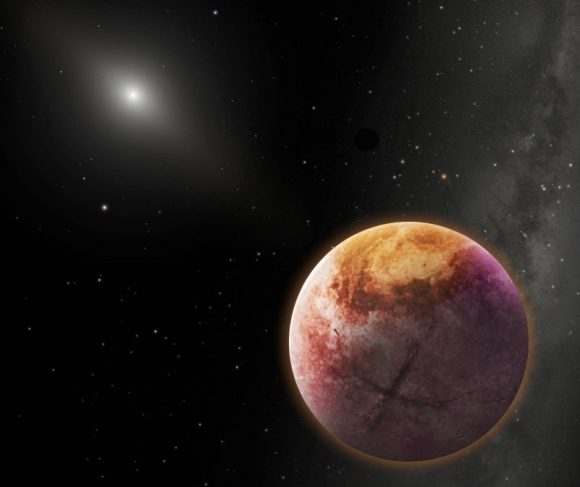
According to their calculations, the presence of a massive planet – one that would complete an orbit around the Sun every 17,117 years, and at an average distance (semimajor axis) of 665 AU – would explain the orbital pattern of these four objects. These results were consistent with the estimates concerning the orbital period of Planet 9, its orbital path, and it mass.
“We analyzed the data of these most distant Kuiper Belt objects,” Malhotra said, “and noticed something peculiar, suggesting they were in some kind of resonances with an unseen planet… Our paper provides more specific estimates for the mass and orbit that this planet would have, and, more importantly, constraints on its current position within its orbit.”
Looks like Planet 9’s days of hiding in the outer Solar System may be numbered!
Further Reading: arXiv, Caltech, Europlanet


